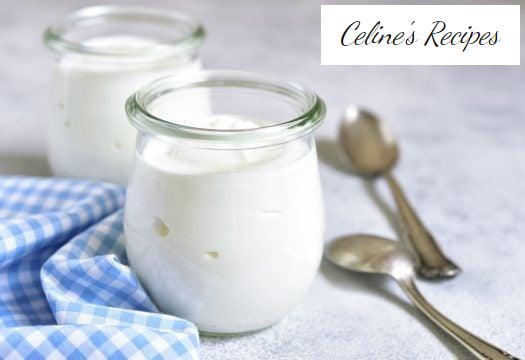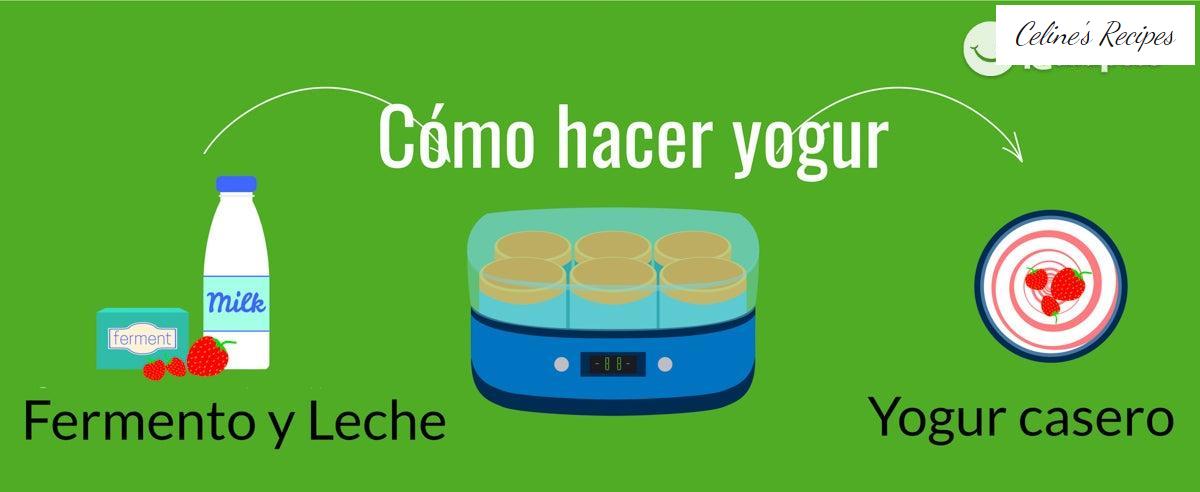
Info.
- Very easy
- 600 minutes
- For 10 people
- 0.1 € / person
- 61kcal per 100g.
How to make homemade yogurt.
The process of making yogurt at home is very simple , as it is for own consumption and we do not need to transport it or it lasts long, we can generate a fermentation of the milk and store it in our fridge for 7 days without the need to pasteurize .
Because industrial pasteurization is the process that destroys the living potential of yogurt.
In my case I have started making yogurt at home because I want Xoel to eat real yogurt. Take advantage of all the benefits of a yogurt a day and leave the famous petisuites that drive you crazy … and that have one of sugar that freaks out.
I have tried some very good ones. You have seen that I recently published in IG how to make yogurt in Stories, and some of those that I have bought in the Market of Wonders. Without going any further, last week I bought with the friend Antonio an incredible one, “La Hermita”… but I don’t go every week and I want to have yogurt in my fridge whenever I want.
It is very easy to do it with the yogurt maker that my mother had in the storage room in Ourense and that I have recovered for myself. But it can also be done without it.
In the end, you don’t have to be very smart to know that many times we eat yogurt and it really isn’t. Go to the supermarket and you will find on the shelves you will find 500 types of yogurt … which really are not. Most are dairy desserts because they do not have live ferments and therefore it is not a probiotic food, since they eliminate what makes them so beneficial.
So I encourage you if you have children at home, or because you really want to take care of yourself, prepare yogurt at home or Kefir . Probiotics to power!

All about the necessary ingredients
- 1 liter of fresh milk : that which is cold in the supermarket, which is short-lived, because it is very much alive. It is pasteurized at a low temperature to eliminate potentially pathogenic bacteria but not the rest of the bacteria necessary for the digestion of lactose or for future fermentation when it is converted into yogurt.
- Ferment: for 1 liter of milk we need a yogurt with live microorganisms, either an industrial yogurt (but really , remember to read it well so specify it), or a previous homemade yogurt. But beware, do not reuse a strain of homemade yogurt more than 3 times as it loses its ability to make yogurt again.
- Another good option to get ferment is to buy it lyophilized , that is dry. For 1 liter of milk we will need 1 gram of ferment. They are easily found but look for one whose composition is 100% pure bacteria.

Yogurt fermentation. Yogurt maker, thermos or pressure cooker
- Our homemade yogurt needs a location to ferment for 8-10 hours at a controlled temperature of 44-45ºC.
- In a pot we put the liter of milk and add the ferment. With a thermometer we control that it reaches a temperature of 45ºC and stir so that it mixes well.
- Then we place the mixture in the place where it will rest to ferment. We have three easy options: yogurt maker, thermos, or pressure cooker.
- The yogurt maker is very simple, it maintains the temperature by itself so we distribute the mixture in the glasses and cover.
- After those 8-10 hours we put the yogurts in the fridge, where they will be in good condition for about 7 days.
- With the thermos and with the pressure cooker , we need a thermometer to control the temperature, which should never rise above 48ºC.
- After heating the milk and adding the ferment, we put the mixture in the thermos and close.
- We place it on a wooden board and in a warm place and do not open until 8-10 hours have passed. Then it opens and goes to the fridge.
- With the pressure cooker equal, but previously we must heat the pot by boiling water. After that we empty that water and check that the inside of the squid is at most 46º C.
- We introduce the glasses with the mixture inside, close and cover with a blanket so that the temperature drops very slowly and gives you time to ferment.
- After 10 hours we open and put the yogurt in the fridge.
Go ahead! And as always, if it doesn’t go right the first time, find out what happened and improve the technique.

It may happen that …
- The yogurt is not with the proper texture. If the fermentation temperature is too low, or the glasses used are too cold … 8 hours will not be enough and it will not curdle properly.
- You can leave it longer but it will be more acidic. If, on the contrary, the temperature was too high, the bacteria are destroyed and it will not work either. Watch and adjust on the next try.
- Yogurt is not homogeneous. You may have whey bags, which are produced by colliding the cups with each other during fermentation.
- Or it may be that the solid part of the liquid serum is separated, also due to excess movement during fermentation or low-quality or skimmed milk. You know, good quality product and tranquility, it is worth it.

Tips to make your yogurt delicious
- Remember that you cannot use normal brick milk. UHT brick milk is subjected to a thermal process of ultra pasteurization or uperization carried out at 150º C that causes the total destruction of bacteria and spores that the milk may contain.
- Can I use semi-skimmed or skimmed milk? Of course, but keep in mind that the texture will change due to the different percentage of milk fat.
- Can I use vegetable milk? By proxy, it can, but not how I teach you here, in the future I will publish how to do it.
- Can you use fresh milk (supermarket) from sheep or goat? Of course. You can also give your yogurts other flavors depending on the type of milk you put on it.






